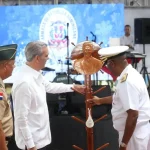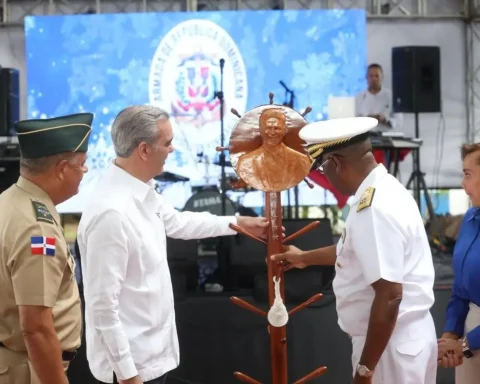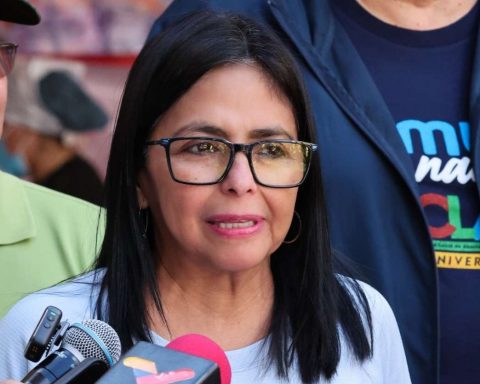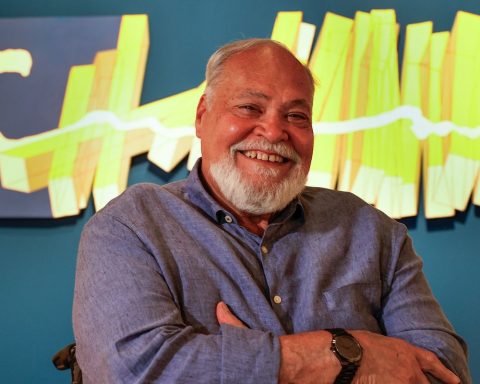A week after it was reported that a 62% of the Nicaraguan population assured that the country “is going down the wrong path” under the dictatorship of Daniel Ortega, according to the most recent survey by the Costa Rican firm CID Gallup, the president appeared at an act of delivery of 150 new buses from the Russian Federation, to make political proselytism of the Sandinista Front and its response to the problem of Collective Urban Transportation (TUC) in the country.
From the perspective of the opponent Juan Diego Barberena, Ortega’s behavior, in reality, is what he seeks to “legitimize himself in the face of the citizen’s aversion to his regime.” Citizens “do not buy that speech”, that the regime is doing “good” to the people. The population, says Barberena, is aware of the economic and sociopolitical crisis, massive migration, unemployment and the lack of public liberties in the country.
Ortega, in fact, made a historical tour of the acquisition of buses for the TUC, from the Sandinista Revolution in the 80s – with him at the helm -, the “neoliberal” governments and his return to power, in 2007. And as it is Recurring in his speeches, he criticized the management of the liberal governments and highlighted that during his period of 16 continuous years in power, the carriers acquired nearly 950 units for various uses on their own.
However, for the opposition Barberena, the only thing that Ortega reflects with his narrative is the partisanization of public services in Nicaragua and the co-optation of transport cooperatives. “What he intends is to use this action – the delivery of buses – to legitimize the exercise of despotic power,” he said.
What Barberena points out is evident in the whimsical use that Ortega makes of the units in any party act. On dozens of occasions, users of the service have had to walk several kilometers because the buses are prioritized to carry the sympathizers of the Sandinista Front, regardless of the demand for mobilization of the population.
This is not the first time that Ortega has used a delivery bus fleet for propaganda. In October 2021, he also did it in an act of delivery of another 250 Russian buses to transport cooperatives. This event occurred just two weeks before the general voting of that year, in which the caudillo prevailed in power for the fourth consecutive term and the second, along with his wife and vice president, Rosario Murillo; a process described as an “electoral farce” by the international community.
Ortega offers Russian buses as political solidarity
Since 2009, when Ortega announced the total renewal of the bus fleet, to date, close to 1,300 collective transport units have arrived. Of these, at least 950 have been provided by Russia -between donations and purchases- and the rest -DINA buses- by Mexico. According to a report from CONFIDENTIAL, in 2009 it was confirmed that the buses supposedly donated by Russia, Ortega’s political ally, were actually acquired with a ten-year loan. The units had an estimated value of $25,000 and those donated by Mexico cost $32,000.
In 2021, the Ortega regime signed a loan agreement with the Eximbank of Russia for almost 17 million dollars for the purchase of 250 KAVZ-4238-61 buses, at a price —according to the manufacturer— of 58,275 dollars per unit. That value is more than double what was paid for each Russian unit between 2009 and 2013, when the regime renewed the TUC fleet in Managua.
Ortega assured this January 31, 2023, that in total they expect to receive in the first months of 2023, 300 PAZ-3204 buses, with a useful life of eight years, according to data from the manufacturer GAZ. These first 150 buses will go to the departments: 60 for León, 30 for Chinandega, 20 for Tipitapa, 10 for Estelí, 10 for Matagalpa, 10 for Masaya, five for Juigalpa, five for Jinotepe.
Photo: Presidency
Eternal debt: improve public transport
Fernando García uses the TUC every day to get around Managua. The change of units was a great advance, he assures, but public transport is not based solely on “changing bus units”, he clarifies. He complains that the poor treatment that the driver provides to all users persists.
“There are peak hours when the bus driver tells you – as if you were a match stick – to continue to the bottom, that there is room at the bottom. And then, in that aspect, it is not just changing units, it is looking for another method, another way, where in reality the user, the people, is provided with a decent public transport service”, claimed García.
The complaints are the same in anyone who travels in TUC: the units are always full -mainly in rush hour-, the waiting time between one route and another is more than 15 minutes, they do not receive courteous treatment from the driver and there is no shortage of those who run behind a unit because they do not stop at the bus booth. And there is no body to turn to for that to improve.

















